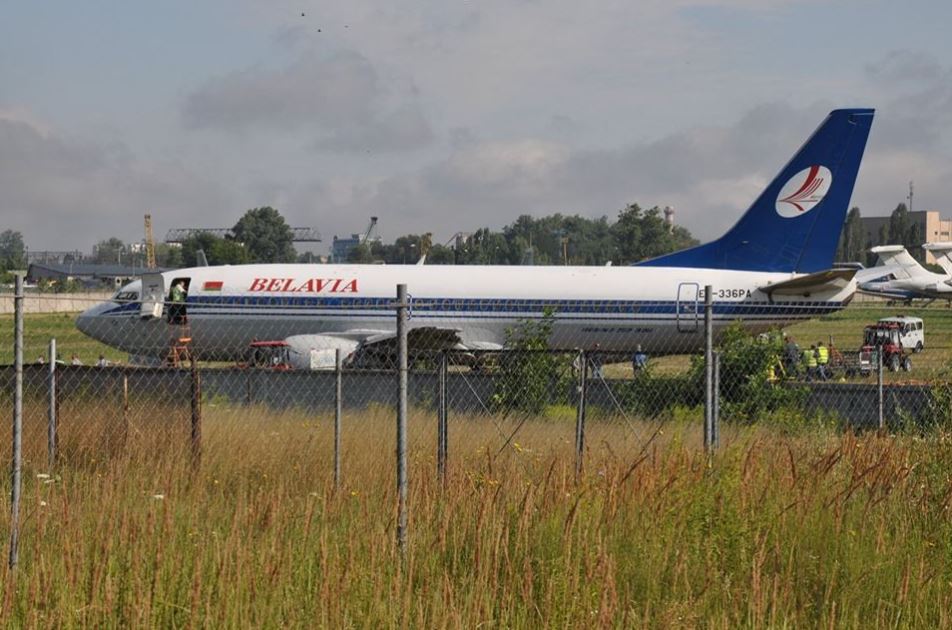 EW-336PA 737-300 Runway Excursion on Landing
EW-336PA 737-300 Runway Excursion on Landing
Home > Accident News > EW-336PA
Contents
12 July 2019 - 737-300, EW-336PA (29058/2946) operated by Belavia had a runway excursion whilst landing at Kiev Zhulyani (UKKK) R/W 26 (LDA 2,200m) on 12 Jul 2019 at 23:49L (20:49Z) in rain.
The aircraft departed the far end of the runway went through the approach lights and came to a stop on the grass 100m beyond the paved surface. There was minor damage to the aircraft but no evacuation and the passengers disembarked via stairs with no reported injuries.
The final report gave the following details
The landing distance required was computed at 4934 feet (1503 meters), the landing distance available was 7421 feet (2262 meters). The braking action was GOOD and autobrake was selected to MAX.
On the approach, the autopilot was disengaged at 134 meters AGL however autothrust remained engaged. According to the FCOM both autopilot and autothrust need to be disengaged at the latest when descending through the minimum height permitted for single channel autopilot operation.
The aircraft crossed the (displaced) runway threshold at 36ft RA and 141Kts (Vref+5). The crew increased the pitch angle to about 4.5-5 degrees to flare the aircraft, however the autothrottle increased the engine thrust to maintain the target speed of 141 knots. At 20ft RA the vertical speed had reduced to 0 fpm. While flying parallel to the runway surface at 15ft RA for about 6-7 seconds the crew returned the thrust levers to idle, the airspeed began to reduce and the aircraft began to descend again. About 7 seconds after the thrust reduction the aircraft's main gear settled on the runway about 970 meters (3182 feet) past the displaced threshold of the runway at about 132Kts, +1.34G vertical acceleration. Due to 3mm water standing on the runway, the main tyres immediately start hydroplaning. 2 seconds after the main gear the nose gear settled on the runway the spoilers deployed, and the engines were selected into full reverse thrust which was used in addition to maximum braking.
When the crew sensed the autobrake was insufficient to stop the aircraft, they applied manual braking. Slowing through 61Kts the thrust reversers were stowed, which resulted in a small forward thrust vector, which did not permit the aircraft to stop within the runway surface. The aircraft crossed the runway end about 4 meters to the left of the centerline, continued across the paved surface of the runway end safety area, went onto soft ground and came to a stop 153 meters past the end of the runway, about 3 meters to the left of the extended runway centerline.
All of the information, photographs & schematics from this website and much more is now available in a 374 page printed book or in electronic format.
*** Updated 05 Aug 2023 ***


